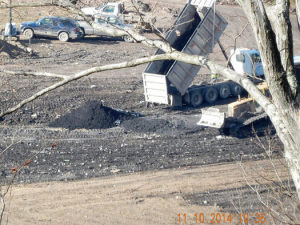 Originally published in Public News Service.
Originally published in Public News Service.
The Environmental Protection Agency (EPA) has largely failed to regulate waste from oil and gas drilling, even though the agency admitted the hazardous nature of the waste decades ago. National and state-based groups are pushing for the agency to at last close the gap.
Twenty-seven years ago, the EPA declared fracking wastewater and related drill cuttings to be hazardous waste, and said the regulation was best left to states, or covered by special rules the agency would then write – except it never wrote them.
Attorney Adam Kron with the Environmental Integrity Project says that’s become a huge problem with the boom in fracking in recent years. His group and similar organizations have said they will sue over the matter.
“EPA just hasn’t acted,” he says. “It’s got clear authority to implement these regulations, but for whatever reason, once it made that pronouncement in 1988 it just stepped back and that was its last word on the issue.”
According to a study by Earthworks, no one knows where more than 60 percent of the liquid waste from neighboring West Virginia oil and gas drilling ends up.
The study adds that, over the last two years, West Virginia industries have sent more than 500,000 tons of drill cuttings to municipal landfills that are too small for the volume and not designed to deal with the materials.
The vacuum left by the EPA has largely shifted the regulatory responsibility to the states, but Kron says that leaves people unprotected if their state does a poor job.
“We’re hopeful that within this timeline EPA can make some sort of meaningful representation, or come to the table,” he says. “Or just give an indication that it’s finally going to get this done.”
Some of the liquid waste ends up being spread on roads to melt ice. In other cases, it’s injected into disposal wells that have been linked to earthquakes or stored in large, open pits which can leak or overflow. The industry argues much of the waste is benign – but Kron says it contains materials that should be handled more carefully.
“You would not want to be exposed to these wastes regularly,” he says. “Benzene, toluene, metals like chromium, barium, and strontium and mercury. And then we’ve just got these extremely high levels of salts.”
The EPA has 60 days to respond to the letter declaring the groups’ intent to sue, which was sent at the end of August. So far it has not replied.




